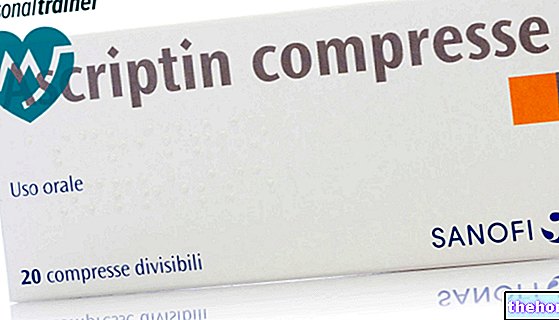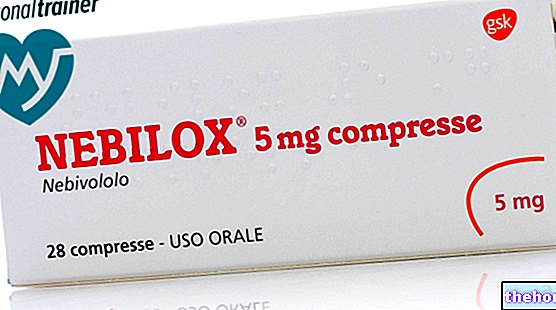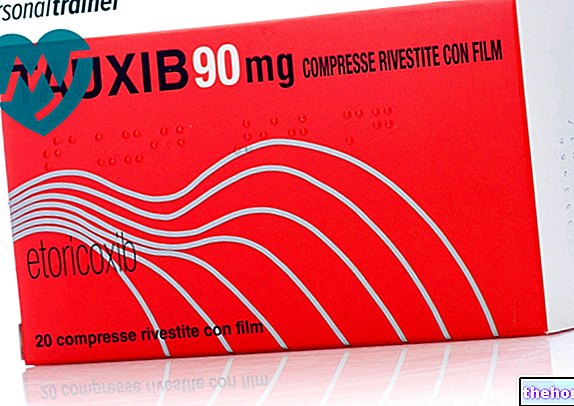Active ingredients: Mesoglycan
PRISMA 24 mg hard capsules
PRISMA 50 mg Hard capsules
Prisma package inserts are available for packs: - PRISMA 24 mg hard capsules, PRISMA 50 mg Hard capsules
- PRISMA 30 mg / ml Solution for injection for intramuscular use
Indications Why is Prisma used? What is it for?
Pharmacotherapeutic group
Antithrombotic.
Therapeutic indications
Chronic venous ulcers
Contraindications When Prisma should not be used
Hypersensitivity to mesoglycan or to any of the excipients listed in section 6.1
Hypersensitivity to heparin and heparinoids
Diathesis and hemorrhagic diseases
Precautions for use What you need to know before taking Prisma
In the event of skin rashes or other manifestations of hypersensitivity, treatment must be discontinued and appropriate therapy instituted.
In all cases in which a simultaneous treatment with anticoagulants is underway, it is advisable to periodically check the haemocoagulative parameters.
Interactions Which drugs or foods can change the effect of Prisma
Tell your doctor or pharmacist if you have recently taken any other medicines, even those without a prescription.
No interaction studies have been performed.
The concomitant administration with anticoagulants could cause an enhancement of the action, due to a possible pharmacodynamic interaction.
Due to the lack of interaction studies, the concomitant use of medicinal products with coagulation effects should be carried out with caution, periodically checking the blood coagulation parameters.
Warnings It is important to know that:
Fertility, pregnancy and breastfeeding
Ask your doctor or pharmacist for advice before taking any medicine.
Pregnancy
The safety of use of mesoglycan during human pregnancy has not been established. Animal studies at dose levels above therapeutic do not indicate harmful effects on the development of the embryo and fetus, or on the course of gestation. Since reproductive and developmental studies in animals are not always predictive of response in humans, the use of PRISMA in pregnancy is not recommended for precautionary reasons.
Feeding time
The passage of mesoglycan into breast milk has not been established, so the use of PRISMA during breastfeeding is not recommended.
Fertility
Effects on human fertility have not been studied. Effects on ability to drive and use machines No studies on the ability to drive and use machines have been performed. . Important information about some of the ingredients PRISMA capsules contain lactose and therefore patients with rare hereditary problems of galactose intolerance, the Lapp lactase deficiency or glucose-galactose malabsorption should not take this drug.
Dosage and method of use How to use Prisma: Dosage
Adults
24 mg capsules: 1 capsule 2 times a day (unless otherwise prescribed by the doctor).
50 mg capsules: 1-2 capsules per day (according to medical prescription).
Pediatric population
The safety and efficacy of Prisma in children and adolescents below 18 years of age have not been established.
Overdose What to do if you have taken too much Prisma
No cases of overdose of PRISMA have been reported. In case of overdose, supportive measures should be taken, such as removing unabsorbed material from the gastrointestinal tract, clinically monitoring the patient and instituting supportive care if necessary.
In case of accidental ingestion / intake of an overdose of PRISMA, notify your doctor immediately or go to the nearest hospital.
If you have any questions about the use of PRISMA, ask your doctor or pharmacist.
Side Effects What are the side effects of Prisma
Like all medicines, PRISMA can cause side effects, although not everybody gets them.
The undesirable effects of PRISMA therapy consist mainly of non-serious disorders of the upper gastrointestinal tract mainly associated with the use of the oral formulations, and skin reactions, which are also not serious. In clinical trials conducted in chronic venous insufficiency (including venous ulcers) the frequency of treatment discontinuation due to adverse reactions was 1.2%.
The following adverse reactions have been reported in clinical trials in chronic venous insufficiency (including venous ulcers) and the post-marketing spontaneous reporting system: The frequency of adverse reactions is defined: [Very common (≥ 1/10 ); Common (≥ 1/100, <1/10); Uncommon (≥ 1 / 1,000 to <1/100); Rare ((≥ 1 / 10,000 to <1 / 1,000); Very rare (≥ 1 / 10,000); Not known (cannot be estimated from the available data]
Disorders of the immune system
Not known: eyelid edema, angioedema
Nervous system disorders
Uncommon: headache
Rare: vertigo
Not known: paraesthesia
Cardiac pathologists
Uncommon: palpitations
Vascular pathologies
Uncommon: hypotension, pre-syncope
Rare: purple
Not known: epistaxis
Gastrointestinal disorders
Common: abdominal pain, upper abdominal pain, dyspepsia
Uncommon: nausea, diarrhea
Skin and subcutaneous tissue disorders
Uncommon: pruritus, urticaria, rash, erythema
Musculoskeletal and connective tissue disorders
Not known: pain in the limbs
Diseases of the reproductive system and breast
Rare: metrorrhagia
General disorders and administration site conditions
Uncommon: malaise
Not known: edema
Not known: injection site pain, injection site hematoma (adverse reactions exclusively associated with intramuscular administration of the medicinal product).
"Reporting of side effects
If you get any side effects, talk to your doctor or pharmacist. This includes any possible side effects not listed in this leaflet. Undesirable effects can also be reported directly through the national reporting system at the address www.agenziafarmaco.gov.it/it/responsabili. By reporting side effects you can help provide more information on the safety of this medicine. "
Expiry and Retention
Expiry: see the expiry date printed on the package.
The expiry date refers to the product in intact packaging, correctly stored.
Warning do not use the medicine after the expiry date shown on the package
Medicines should not be disposed of via wastewater or household waste. Ask your pharmacist how to throw away medicines you no longer use. This will help protect the environment.
KEEP THE MEDICINAL PRODUCT OUT OF THE REACH AND SIGHT OF CHILDREN.
Other_information "> Other information
Composition
Each hard capsule contains:
Active ingredient: Mesoglycan (sodium salt) 24 mg Mesoglycan (sodium salt) 50 mg
Excipients: lactose monohydrate, corn starch, croscarmellose sodium, magnesium stearate, gelatin, titanium dioxide, erythrosine.
Pharmaceutical form and content
24 mg hard capsules.
Box of 50 hard capsules in blister.
Hard capsules of 50 mg.
Box of 30 hard capsules in blister.
Source Package Leaflet: AIFA (Italian Medicines Agency). Content published in January 2016. The information present may not be up-to-date.
To have access to the most up-to-date version, it is advisable to access the AIFA (Italian Medicines Agency) website. Disclaimer and useful information.
01.0 NAME OF THE MEDICINAL PRODUCT -
PRISM
02.0 QUALITATIVE AND QUANTITATIVE COMPOSITION -
Prisma 24 mg hard capsules
Each hard capsule contains:
mesoglycan (sodium salt) 24 mg
Prisma 50 mg hard capsules
Each hard capsule contains: mesoglycan (sodium salt) 50 mg
Prisma 30 mg / ml solution for injection for intramuscular use
Each 1 ml vial contains: mesoglycan (sodium salt) 30 mg
Excipients with known effects:
hard capsules: lactose
ampoules: chlorocresol
For the full list of excipients see section 6.1.
03.0 PHARMACEUTICAL FORM -
Hard capsules.
Injectable solution.
04.0 CLINICAL INFORMATION -
04.1 Therapeutic indications -
Chronic venous ulcers.
04.2 Posology and method of administration -
Dosage
Prisma 24 mg hard capsules: 1 capsule twice a day (unless otherwise prescribed).
Prisma 50 mg hard capsules: 1 capsule once or twice a day, according to medical prescription, in relation to the severity of the disease in progress.
Prisma 30 mg / ml solution for injection (for intramuscular use): 1-2 ampoules per day for intramuscular use (unless otherwise prescribed).
Pediatric population
The safety and efficacy of Prisma in children and adolescents below 18 years of age have not been established.
Method of administration
Hard capsules: oral use.
Solution for injection: intramuscular use.
04.3 Contraindications -
Hypersensitivity to the active substance or to any of the excipients listed in section 6.1.
Hypersensitivity to heparin and heparinoids.
Diathesis and hemorrhagic diseases.
04.4 Special warnings and appropriate precautions for use -
In the event of skin rashes or other manifestations of hypersensitivity, treatment must be discontinued and appropriate therapy instituted.
In all cases in which a simultaneous treatment with anticoagulants is underway, it is advisable to periodically check the haemocoagulative parameters.
Excipients:
Prisma capsules contains lactose and therefore patients with rare hereditary problems of galactose intolerance, the Lapp lactase deficiency or glucose-galactose malabsorption should not take this drug.
Prisma ampoules contain chlorocresol: it can cause allergic reactions.
04.5 Interactions with other medicinal products and other forms of interaction -
No interaction studies have been performed.
The concomitant administration with anticoagulants could cause an enhancement of the action, due to a possible pharmacodynamic interaction.
Due to the lack of interaction studies, the concomitant use of medicinal products with coagulation effects should be carried out with caution, periodically checking the blood coagulation parameters.
04.6 Pregnancy and breastfeeding -
Pregnancy
The safety of use of mesoglycan during human pregnancy has not been established. Animal studies above therapeutic doses do not indicate harmful effects on the development of the embryo and fetus, or on the course of gestation.
Since reproductive and developmental studies in animals are not always predictive of response in humans, the use of Prisma during pregnancy is not recommended for precautionary reasons.
Feeding time
The passage of mesoglycan into breast milk has not been established, so the use of Prisma during breastfeeding is not recommended.
Fertility
Effects on human fertility have not been studied.
04.7 Effects on ability to drive and use machines -
No studies on the ability to drive and use machines have been performed.
04.8 Undesirable effects -
The undesirable effects of Prisma therapy consist mainly of non-serious disorders of the upper gastrointestinal tract mainly associated with the use of the oral formulations, and skin reactions, which are also not serious. In clinical trials conducted in chronic venous insufficiency (including venous ulcers) the frequency of treatment discontinuation due to adverse reactions was 1.2%.
The following adverse reactions have been reported in clinical trials in chronic venous insufficiency (including venous ulcers) and the post-marketing spontaneous reporting system:
The frequency of adverse reactions is defined:
[Very common (≥ 1/10); Common (≥ 1/100,
Disorders of the immune system
Not known: eyelid edema, angioedema
Nervous system disorders
Uncommon: headache
Rare: vertigo
Not known: paraesthesia
Cardiac pathologies
Uncommon: palpitations
Vascular pathologies
Uncommon: hypotension, pre-syncope
Rare: purple
Not known: epistaxis
Gastrointestinal disorders
Common: abdominal pain, upper abdominal pain, dyspepsia
Uncommon: nausea, diarrhea
Skin and subcutaneous tissue disorders
Uncommon: pruritus, urticaria, rash, erythema
Musculoskeletal and connective tissue disorders
Not known: pain in the limbs
Diseases of the reproductive system and breast
Rare: metrorrhagia
General disorders and administration site conditions
Uncommon: malaise
Not known: edema
Not known: injection site pain, injection site hematoma (adverse reactions exclusively associated with intramuscular administration of the medicinal product).
Reporting of suspected adverse reactions
Reporting of suspected adverse reactions occurring after authorization of the medicinal product is important as it allows continuous monitoring of the benefit / risk balance of the medicinal product. Healthcare professionals are asked to report any suspected adverse reactions via the national reporting system. "address: www.agenziafarmaco.gov.it/it/responsabili.
04.9 Overdose -
There have been no reported cases of Prisma overdose.
Treatment
In the event of overdose, supportive measures should be taken, such as removing unabsorbed material from the gastrointestinal tract, clinically monitoring the patient and instituting supportive therapy if necessary.
05.0 PHARMACOLOGICAL PROPERTIES -
05.1 "Pharmacodynamic properties -
Pharmacotherapeutic group: Antithrombotics.
ATC code: B01AB.
The active ingredient of Prisma, mesoglycan, extracted and purified from the porcine intestinal mucosa, is a set of glucosaminoglycans (GAGs) represented as follows: heparan sulfate 47.5%, dermatan sulfate 35.5%, chondroitin sulfate 8.5%, slow heparin 8.5 %.
Mechanism of action
The pharmacological activity of Prisma is mainly due to the presence of heparan sulphate and dermatan sulfate, which are physiological constituents of the vessel wall and is expressed at the endothelial and subendothelial level, with an antiatherogenic effect (inhibition of platelet adhesion, stimulation of the lipoproteinlipase enzyme, inhibition of the proliferation of smooth muscle fiber cells of the media), antithrombotic (activation of antithrombin III and heparin II cofactor) and profibrinolytic (stimulation of the tissue plasminogen activator).
On the venous side of the circulatory system, Prisma, in addition to intervening in an antithrombotic sense, is able to restore the physiological properties of selective barrier exerted by the capillary endothelium, thus carrying out an effective anti-edema activity.
05.2 "Pharmacokinetic properties -
Absorption
Pharmacokinetic studies on tritium-conductive-labeled mesoglycan in rats and monkeys have shown, after oral administration, a maximum absorption peak at 30 minutes in the rat and at 2 hours in the monkey.
The steady-state condition is maintained up to the 7th hour after administration in both animal species. This, presumably, is due to the slow release of the drug, initially captured by the gastrointestinal wall.
After intravenous administration a different behavior is observed and in any case in accordance with what is reported in the literature for similar products: the maximum blood levels are reached almost instantly with a subsequent rapid fall within 1 hour, according to a biphasic trend.
Distribution
Tissue tropism studies have shown interesting drug concentrations especially in the renal and hepatic parenchyma, heart and aortic wall.
Elimination
Urinary excretion within 48 hours after intravenous administration is within the range of 35-60% of the dose.
05.3 Preclinical safety data -
Non-clinical data reveal no special hazard for humans based on conventional studies of safety pharmacology, repeated dose toxicity, genotoxicity, reproductive and developmental toxicity.
06.0 PHARMACEUTICAL INFORMATION -
06.1 Excipients -
Hard capsules: lactose monohydrate, corn starch, croscarmellose sodium, magnesium stearate, gelatin, titanium dioxide, erythrosine.
Vials: sodium chloride, chlorocresol, water for injections.
06.2 Incompatibility "-
In the absence of incompatibility studies, the medicinal product must not be mixed with other products.
06.3 Period of validity "-
Hard capsules: 5 years.
Solution for injection for intramuscular use: 3 years.
06.4 Special precautions for storage -
This medicine does not require any special storage conditions.
06.5 Nature of the immediate packaging and contents of the package -
Prisma 24 mg hard capsules
Box of 50 capsules in blister.
Prisma 50 mg hard capsules
Box of 30 capsules in blister.
Prisma 30 mg / ml solution for injection for intramuscular use
Box of 10 ampoules.
06.6 Instructions for use and handling -
No special instructions.
07.0 HOLDER OF THE "MARKETING AUTHORIZATION" -
MEDIOLANUM pharmaceutici S.p.A. - Via San Giuseppe Cottolengo n.15, 20143 Milan.
08.0 MARKETING AUTHORIZATION NUMBER -
Prisma 30 mg / ml solution for injection
for intramuscular use: A.I.C. n. 023653025
Prisma 24 mg hard capsules: A.I.C. n. 023653052
Prisma 50 mg hard capsules: A.I.C. n. 023653076
09.0 DATE OF FIRST AUTHORIZATION OR RENEWAL OF THE AUTHORIZATION -
June 2010.
10.0 DATE OF REVISION OF THE TEXT -
November 2015.




























